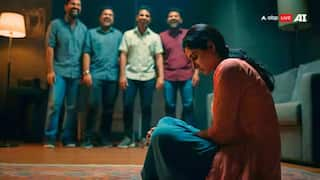EXPLAINED: Who Are The Bhils? Why They Are Demanding A Separate Bhil Pradesh Carved Out Of Gujarat
Demand For Bhil Pradesh: AAP MLA and tribal leader Chaitar Vasava has renewed the demand for Bhil Pradesh, claiming injustice to the tribal people. Let's take a look into the history of the Bhil tribe

The demand for 'Bhil Pradesh', a separate state for the tribal community carved out of Gujarat and three neighbouring states, has reared its head once again. The latest demand was made by Gujarat AAP MLA and tribal leader Chaitar Vasava, who claimed that injustice has been done to the tribal people by the government by "snatching" their rights on "jal, jungle and jamin (water, forest, food)".
In 2022 as well, a separate state for tribal people in western India was made by the Bharatiya Tribal Party (BTP), a Gujarat-based party.
Let's take a look into the history of the Bhil tribe and their demands.
So, Who Are The Bhils?
The Bhils are considered one of the oldest tribes in India. It is also the second largest tribe in the country. The Bhil tribe is an expert in the use of bow and arrow. It is believed the name "Bhil" came from the Dravidian word "billu", which means bow and arrow.
Today, the Bhil community can be mainly found residing in Rajasthan, western Madhya Pradesh, Gujarat and northern Maharashtra. Some have also moved to other states like Tripura for jobs in tea gardens.
In Gujarat, Bhil is the dominant tribe comprising 46 per cent of the total tribal population of the state, according to the government's Gujarat Tribal Research and Training Society. Today, most of them are into farming or work as agricultural labourers. Some are also skilled sculptors.
The Bhils revere Eklavya, who, as per the Mahabharata, cut off his right hand's thumb as ‘guru dakshina’ to Dronacharya. In fact, according to a report in Hindustan Times, Bhil people never use their thumbs while shooting a bow and arrow as a symbolic protest against Dronacharya.
History Of The Bhils And The Mangarh Massacre Or 'Adivasi Jallianwala Bagh'
Before India's Independence, the Bhils mainly served as bonded labourers and faced exploitation in the hands of colonial powers, according to the book 'A History of Rajasthan' by Rima Hooja. The great famine of 1899-1900 due to drought, which claimed the lives of over six lakh people, only worsened the situation for the Bhils.
Amid the dire conditions, a bonded labourer named Guru Govindgiri, now revered as Govind Guru, started fighting for the social upliftment of the Bhils. Guru Govindgiri, born in Rajasthan's Dungarpur, realised that the plight of the Bhils were to be blamed on alcohol addiction and social evils.
He started the 'Bhagat Movement' in 1908 and urged the community to reject bonded labour and fight for their rights and better wages. However, the uprising was seen as a sign of the beginning of a revolt by the rulers of princely states of Dungarpur, Banswara and Santrampur and the British.

Wary over his growing influence over the Bhils, Guru Govindgiri was briefly arrested in 1912-13 and soon Dungarpur authorities exiled him from the state. During this period, it is believed he had visions of a a 'Bhil Raj', according to the book 'A History of Rajasthan'.
Soon, Govindgiri's followers sent out messages to other community members to congregate for a religious meeting at Mangarh hill, situated in the dense forests on the border of Banswara and Santrampur, on November 13, 1913. The meet turned into an arms training camp, with Govindgiri himself giving them lessons in use of arrows, country-made revolvers and swords.
The Bhils placed a charter of 33 demands before the British related to bonded labour, high tax and harassment of Govindgiri's followers by the British and princely states. However, the demands were rejected by the British and they asked the Bhils to leave by November 15, 1913.
A confrontation was imminent and two days later, seven companies of British (Mewar Bhil Corps) and forces of the Dungarpur, Banswara and Sunth states attacked Mangarh Hill.
The British, under the command of officers Major S Bailey and Captain E Stoiley, began firing from their cannons indiscriminately, killing over 1,500 people, including women and children.
"Machine guns and cannons used in the attack were loaded on donkeys and mules and brought to Mangadh Hill and neighbouring peaks under the command of British officers Major S Bailey and Captain E Stoiley," according to a book published by the Gujarat Forest Department titled 'Govind Guru, The Chief Actor of the Mangarh Revolution'.
It is said the firing ended only when a British officer found a baby of the Bhil tribe breastfeeding on its mother's corpse.
Govindgiri was captured and sentenced to life imprisonment. He died in Kamboi near Limbdi in Gujarat in 1931.
The Mangarh Hill massacre or 'Adivasi Jallianwala Bagh' has never received its due place in history and cannot be found in school history books.
In November 2022, Prime Minister Narendra Modi, during his visit to Rajasthan, announced national monument status to Mangarh Dham, where lakhs of people attend an annual fair hosted in memory of Govind Guru.
At the same event, Gujarat Chief Minister Bhupendra Patel said the killing of tribals by the British in Mangarh in 1913 was more gruesome than the Jallianwala Bagh massacre.
What Are The Demand Of The Bhils?
The Bharatiya Tribal Party (BTP), formed in 2017 in Gujarat by Chhotubhai Vasava, had made a demand for a separate state, Bhil Pradesh, carved out of 39 districts spread over four states -- 16 in Gujarat, 10 in Rajasthan, seven in Madhya Pradesh, and six in Maharashtra.
In fact, a delegation headed by Vasava had handed over a memorandum containing this demand to former President Pratibha Patil. However, the issue failed to move forward and did not get political backing.
Former Dahod MP Somjibhai Damor had also started a movement for a separate state for tribals but it failed to get traction.
Earlier this month, AAP MLA and tribal leader Chaitar Vasava renewed the demand for Bhil Pradesh, claiming injustice to the tribal people of Gujarat. According to a PTI report, Vasava claimed thousands of hectares of land belonging to tribals were given away for various projects in Kevadia, where the Statue of Unity was built.
"As a result, tribals of the area, who were the real owners of the land, are now reduced to working as labourers for Rs 280 per day," Vasava said.
He further claimed that the BJP government in Gujarat diverted the budget meant for tribal communities. He also said tribal areas were rich in water, timber and deposits of coal as well as other minerals but they remain underdeveloped.
Related Video
Delhi flood update: once again AAP points out BJP, for Delhi's present situation




























